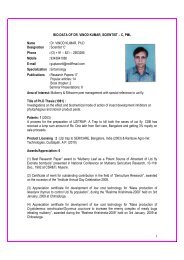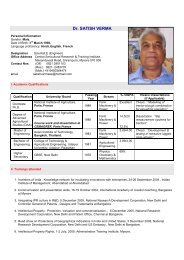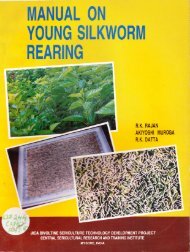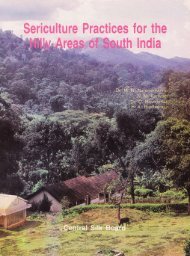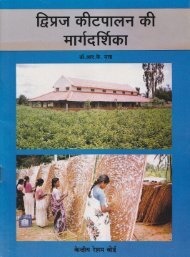Mulberry
Mulberry Cultivation in South India - Central Sericultural Research ...
Mulberry Cultivation in South India - Central Sericultural Research ...
You also want an ePaper? Increase the reach of your titles
YUMPU automatically turns print PDFs into web optimized ePapers that Google loves.
iv) Variety of <strong>Mulberry</strong>:<br />
An improved selection namely Kanva-2, also referred to as M5, is a superior<br />
variety evolved by the lnstitute, which is a vigorous strain responding well to manuring<br />
and capable of giving aboul 25To more leaf yield. This variety thrives weil both under<br />
dry as well as irrigated conditionS. Qualitywise also, it is superior to the local variety<br />
of mulberry and therefore, could be used with great advantage.<br />
v) Manuring:<br />
As pointed out earlier, application of a ba.sal dose of organic manure like<br />
compost or cattle manure, is necessary for successful estabiishment of the garden.<br />
Thereafter, the young growing plants should be assisted to put forth vigorous and<br />
maximum growth through periodical fertiliser applications.<br />
ln the case of the rainfed garden, which is planted in June-July during the<br />
South-West monsoon season, the mulberry will receive sufficient rains from both the<br />
monsoons and this fact should be taken full advantage of to achieve maximum growth<br />
and build up a huge sturdy frame, so that the plant may stand the following drought<br />
months, from January to April very well. This is achieved by applying two doses of<br />
nitrogenous fertilisers such as Ammonium Sulphate or Urea at the rate of 25 kg. of<br />
N/ha for the first application aller 2112 to 3 months of growth and again, another 40 kg.<br />
of N/ha as the second dose after an interval of another three months. This would<br />
enable the plants to reach a growth of about 6' (2 m.) in about 6 to g months'time.<br />
ln the case of irrigated mulberry, where the plant will grow vigorously due to<br />
assured irrigation, the first dose of nitrogenous fertiliser should be given after 21l,<br />
months of planting at the rate of about 40 kg. N/ha. ln the next 2 to 21lz months, the<br />
plants would be ready for first harvest of leaves. Thereafter, the normal fertiliser<br />
application programme (described later) could be resorted to.<br />
vi) Weeding and lnter-cultivation:<br />
During the initial stages of plant establishment in the field, weed growth should<br />
be kept to the minimum, so that lhe growing young plants are not smothered by the<br />
weeds. Atleast two weedings should be carried out during the first six months after<br />
planting of cuttings. once after two months of planting and again a{ter an interval of<br />
2 to 3 months. The weeding operation should be thorough and the soil should be dug<br />
deep to remove the weeds with roots. This deep digging is carried out as a part of the<br />
weeding operation and results in necessary loosening of the soil and stimulation to the<br />
plants to grow vigorously. Thus,special care should be taken to reduce the weed<br />
growth as much as possible in the first year of planting. Thereafter, the shade effect<br />
of the fully grown mulberrv will tend to keep the weeds down. Similarly, periodicai<br />
6




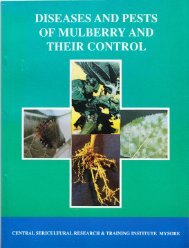

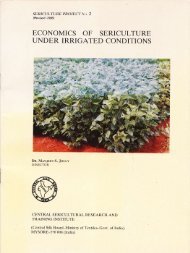
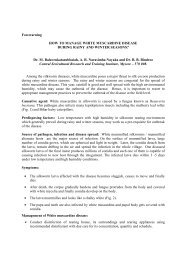
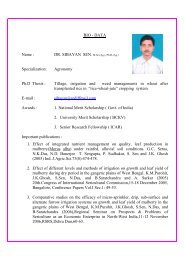
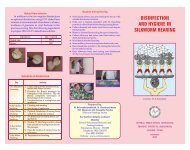
![E}A]\GALORE](https://img.yumpu.com/54052619/1/190x260/eagalore.jpg?quality=85)

